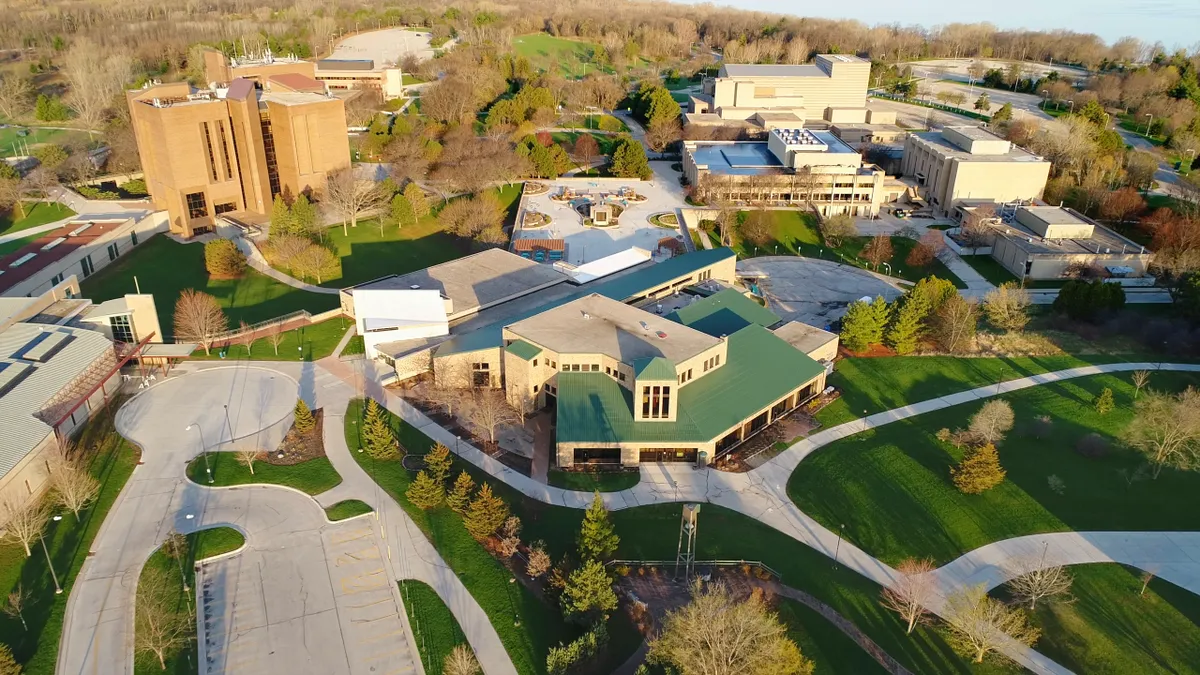Dive Brief:
- Most chancellors of Wisconsin’s state universities will receive annual bonuses of up to 15% of their base salaries if their institutions meet key metrics tied to strategic goals, the state’s board of regents voted Monday.
- For fiscal 2025, the added compensation, which the system dubs “compensation-at-risk,” will be tied to first-to-second year retention rates for undergraduate students, according to documents provided by a system spokesperson. The arrangement does not apply to University of Wisconsin-Madison’s Chancellor Jennifer Mnookin, whose bonus is tied to her staying in the role.
- Specific targets for each chancellor will be created after 10-day fall enrollment numbers are released this year. The compensation increases come as many of the state’s universities face budget shortfalls and retention challenges.
Dive Insight:
Falling retention rates within the Universities of Wisconsin have been flagged as one of the key woes facing the system.
They were top of the list of themes that emerged from a deep financial analysis into the system’s universities carried out with consulting firm Deloitte.
In the spring, Jay Rothman, the system’s president, pointed to lower retention rates, along with rising costs, lagging state funding and dwindling cash reserves at some universities.
Total enrollment in the Universities of Wisconsin fell nearly 12% between its peak in 2010 and 2022, when the figure hit a low of 160,782 students, before a modest uptick in 2023.
Tuition revenue has shrunk with enrollment at many of the system’s institutions, while expenses have increased — as they have through much of the higher ed world. The result is that six of Wisconsin’s public universities are facing structural deficits for the 2025 fiscal year.
All of this comes after the system’s institutions have made major cuts to expenses, including the University of Wisconsin-Parkside, which reduced its workforce by 10% last year.
“For years, we have tried to make ends meet on the backs of those who provide the education students deserve and parents expect — our faculty and staff,” Rothman said this spring. “That should not have to continue.”
At the time, Rothman highlighted increasing retention as a potential opportunity for the system.
Now, the regents are zeroing in on the metric to incentivize chancellors.
Among the system’s 13 universities, all but two saw year-over-year increases in second-year retention in 2022, according to a 10-year study by the system. The exceptions were UW-Parkside, which had a flat retention rate, and the University of Wisconsin-River Falls, which saw a small decline.
Across the system, second-year retention rose 1.3 percentage points to 82.6% in 2022. While that figure is slightly above the systemwide figure of 82.3% for 2013, all but three of the network’s universities had lower second-year retention in 2022 than 2013.
What’s more, significant disparities exist within the system.
The University of Wisconsin-Madison had the highest retention rate, at 94.5%, in 2022. However, over half of the system’s universities had rates at least 20 percentage points below that figure, including the campuses at Parkside, Milwaukee, Oshkosh and Green Bay.
A recent study from the National Student Clearinghouse Research Center found that across four-year public institutions, 86.4% of students who enrolled in fall 2022 returned to college for their second year, with 78% electing to stay at the same institution.














